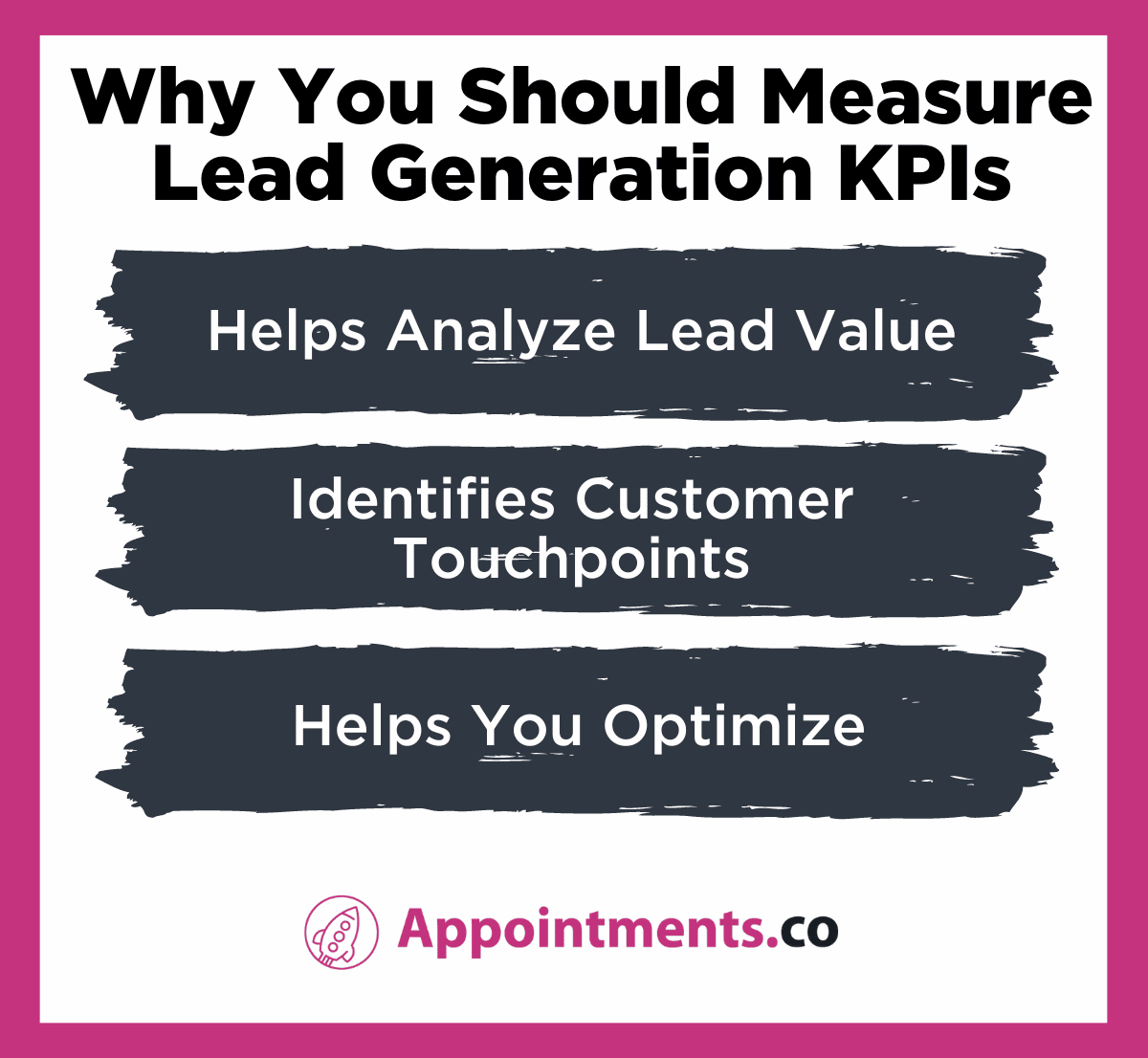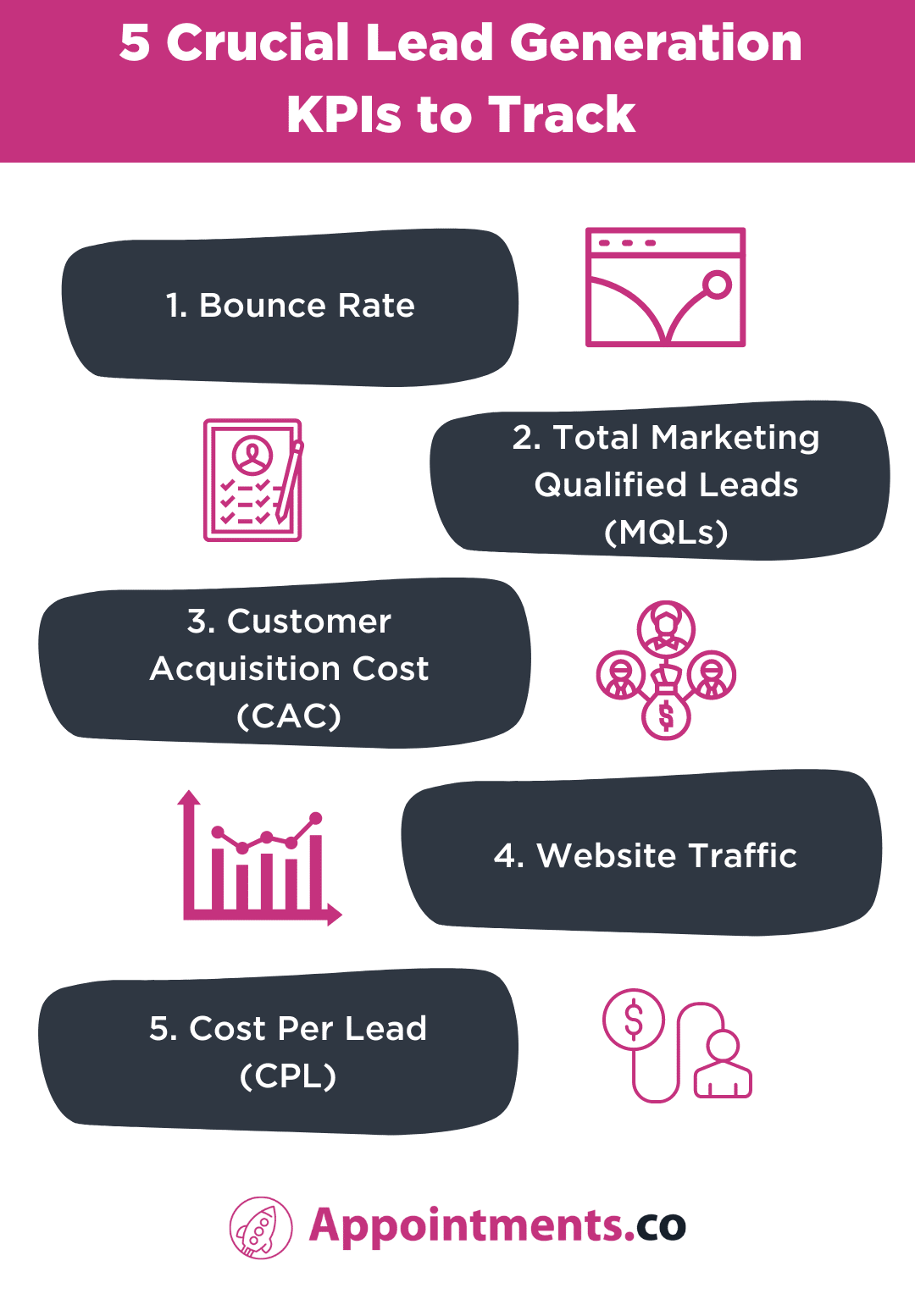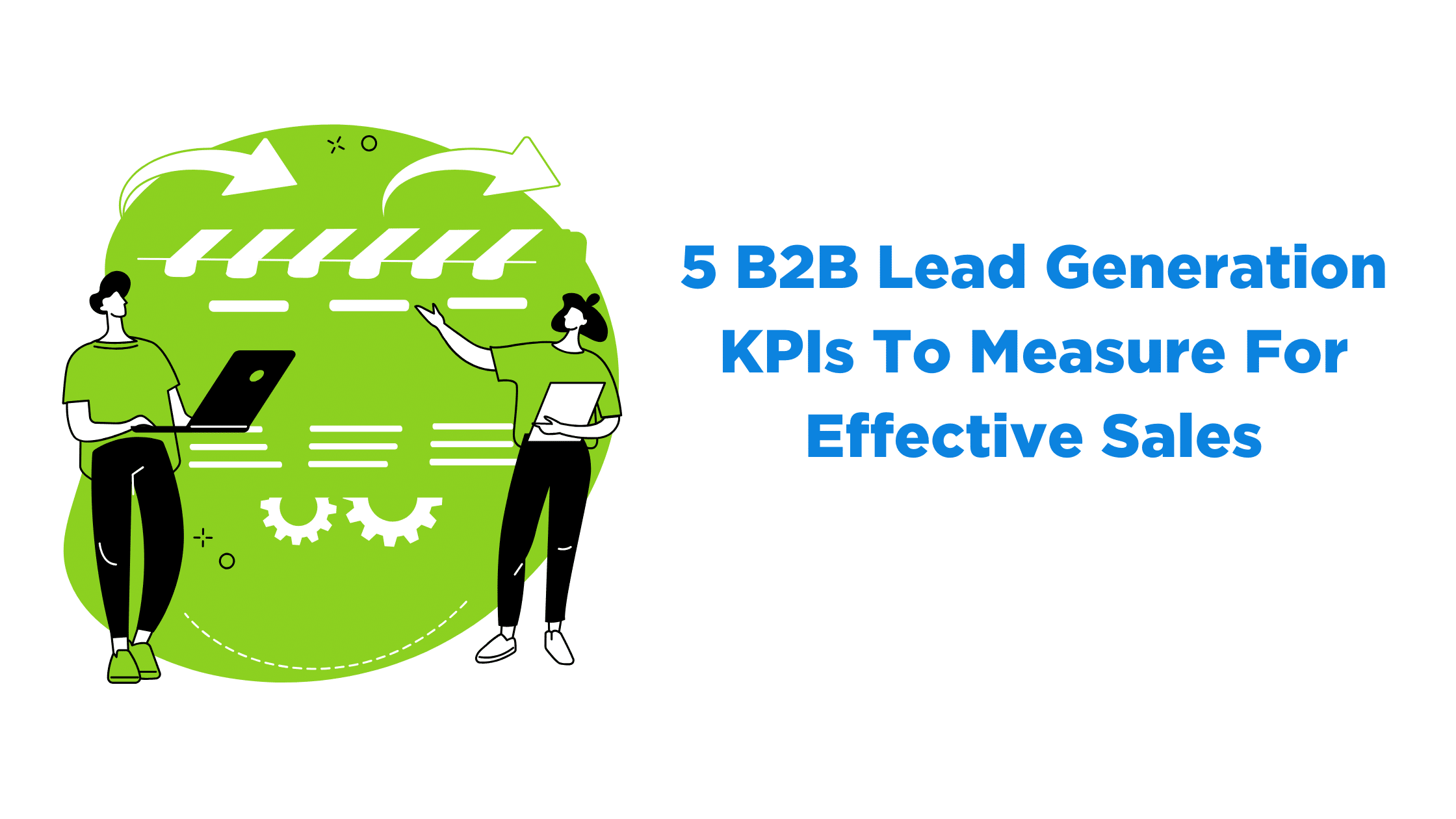Lead generation is a key element responsible for driving growth for most companies. In the fierce B2B marketing era, if you want to thrive, you need to be data-driven and intelligent enough to identify and keep track of lead generation KPIs that are relevant to your goals.
The fundamental way to know if your lead generation strategies are working is by measuring your business’s key performance indicators (KPIs). To help you with this, let us take a closer look at the significance of lead generation KPIs and why it is essential to measure them.
Quick Links:
- What are Lead Generation KPIs?
- Why You Should Measure Lead Generation KPIs?
- 5 Crucial Lead Generation KPIs to Track
- FAQs
What Are Lead Generation KPIs?
Lead Generation KPIs are key performance indicators that provide insight into the performance of your marketing and sales efforts. Marketing and sales campaigns generate much data, such as visits, views, and impressions, but not all will be relevant to your lead generation goals.
Evaluating lead generation KPIs relevant to your business goals alone from time to time helps you leverage data insights and grow your business.
Why You Should Measure Lead Generation KPIs
B2B marketing is different from B2C because selling to businesses is challenging. They are driven by the conscientious nurturing of qualified leads.
Lead generation is a high priority for 85% of B2B companies, and more than six out of ten marketers say that generating leads is their number one challenge. To tell whether your lead generation campaigns are paying off your efforts, you need to measure them against your objectives. Here are a few points to explain why you need to measure lead generation KPIs.

1. Helps Analyze Lead Value
For B2B companies, acquiring new leads is the first and most essential yet challenging task for generating higher revenue. Not all leads you generate are qualified. In B2B, you generally require many qualified leads, but it is only beneficial if they are ready to make a buying decision or have purchasing authority to buy. That’s why measuring the lead’s quality and value is essential.
2. Identifies Customer Touchpoints
The B2B buyer’s journey often runs long. By the time your lead signs a sales agreement, they may have been exposed to all messaging and content. Not all touchpoints have played an equal role in moving them closer to their final decision. If you survey your customers, they may need help putting their finger precisely on what touchpoint sent them your way. The only way to know is to identify the right KPIs to measure and analyze.
3. Helps You Optimize
Measuring KPIs lets you know if your campaign could be performing better, and needs to be optimized. Narrowing down your KPIs that relate directly to the goals and your customer’s buying journey can help you more accurately find the weak spots in your campaign, and enable you to optimize accordingly.
5 Crucial Lead Generation KPIs to Track
Any lead generation campaigns will generate vast amounts of data. To measure the suitable KPIs, you need to understand your product or service, USPs, objectives, and target audience. Here are some of the critical KPIs you can track.

1. Bounce Rate
The bounce rate is one of the best ways to analyze the performance of your lead generation strategy. Bounce rate is the rate that which website visitors navigate away from your website without checking out other pages.
Suppose a user comes to your homepage from a search engine and goes back to search results instead of clicking one of your links to another page; that’s called a bounce.
A lower bounce rate is excellent, meaning many people find your site useful and continue to come to your website for further information. A higher bounce rate can negatively impact conversion. Several factors contribute to high bounce rates. A high bounce rate means that the readers didn’t find anything that interested them on your site.
Optimizing your demographics for a lower bounce rate is best. You may target individuals who aren’t interested in something other than your product or service. Or, your content needs to be more informative to make them want to purchase. This lead generation KPI is crucial for success at getting lead value.
Note: All analytics software calculates bounce rate using the same formula – the total number of site visitors divided by the number of visitors who immediately leave the site.
2. Total Marketing Qualified Leads (MQLs)
Marketing Qualified Leads or MQLs, are the leads from a specific industry. These are the people who have directly shown interest in your brand’s products or services. This KPI provides a better indication of your lead generation campaign’s success.
It helps you understand whether you are reaching your target audience or prospects with your campaigns and allows you to modify the demographics accordingly. This KPI can also help you understand the potential problems with targeting and traffic sources. Through this, you can fix issues at a more granular level.
3. Customer Acquisition Cost (CAC)
Customer Acquisition Cost is the average amount of money you spend to get a new customer. Businesses try to lower the CAC to get a good ROI. It is generally calculated by dividing the marketing spend (amount invested in the campaigns) by the number of customers gained through that campaign.
It is an important lead generation KPI as it tells you whether you are overspending on acquiring customers, and if your lead generation method is effective or not. This way, you can reallocate the budget to prioritize the low marketing channels with low CAC.
4. Website Traffic
Website traffic tells you about the number of unique visitors that have arrived on your website or specific pages over a period of time. You can calculate how many visitors landed from your lead generation campaigns on different channels.
You can then check the number of returning visitors to understand the impression that your website makes. This metric also proves to help measure the quality of the lead, as the number of website visits enables you to understand whether the lead is interested or not.
5. Cost Per Lead (CPL)
Finally, we have CPL on the list, and this is often useful when it comes to measuring the effectiveness of your paid advertising campaigns. By calculating the cost per lead on different marketing channels, you can understand where to allocate your budget to generate more leads at a low cost.
You can easily calculate this by dividing your marketing spend on a particular campaign by the total number of leads you generated through that channel, or campaign. This can help you identify the best lead source for your business, so you can easily optimize your lead generation campaigns on other channels to minimize the CPL.
FAQs
1. What is lead generation KPI?
Lead generation KPIs are metrics that help your sales and marketing team to measure and strategize your lead generation campaigns.
2. What are the benefits of measuring lead generation KPIs?
– Improves lead quality
– Increased lead conversion rate
– Increase in ROI
– Improves customer lifetime value
3. How are lead generation KPIs measured?
Lead generation KPIs involve measuring your marketing data with the help of analytical tools. For example, comparing your impressions to the total number of leads from a specific campaign or comparing total spending to the total number of leads gathered.
Monitor KPIs for Your Business!
So, that’s all about the B2B lead generation KPIs. The information above can help optimize lead gen campaigns, lower acquisition costs, and maximize returns.
However, these KPIs can often tell you the current lead generation story of your brand, but there is not much that B2B businesses can do with simply the KPIs. For lifting and skyrocketing the results, you can outsource the lead generation and demand generation process. If you are running low on resources or need a fresh perspective for your campaigns, feel free to connect with our team to get tailored lead-generation solutions.
Related Posts
- 8 Best Lead Generation Tips for Effective Conversion
- 5 B2B Lead Nurturing Strategies to Close More Deals
Illustrations by Storyset



